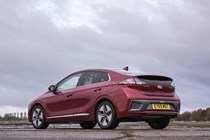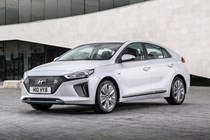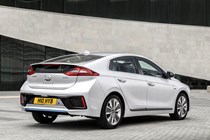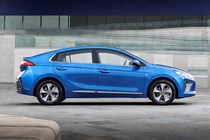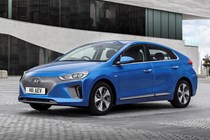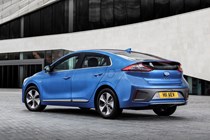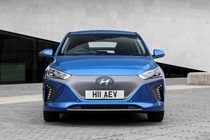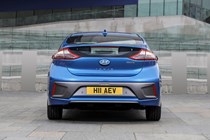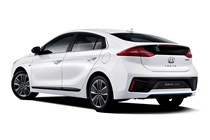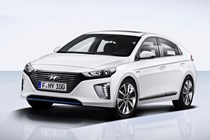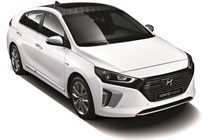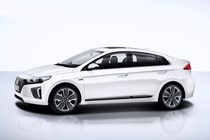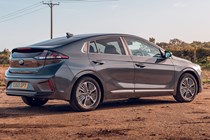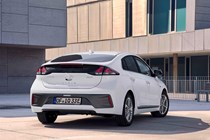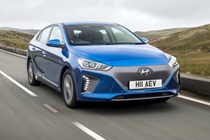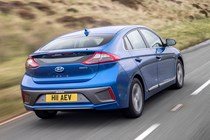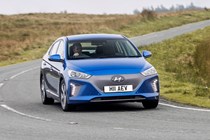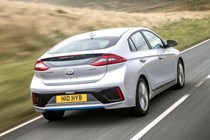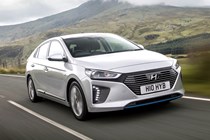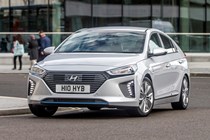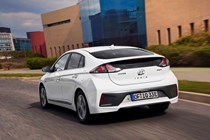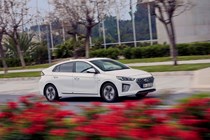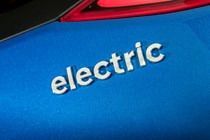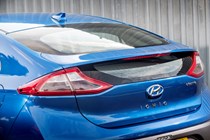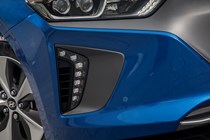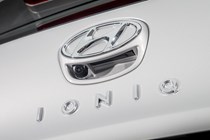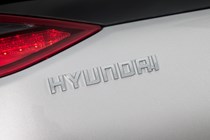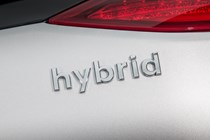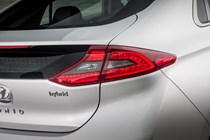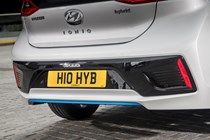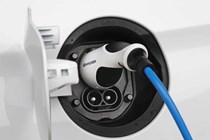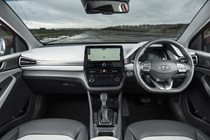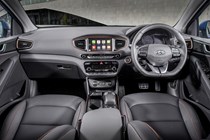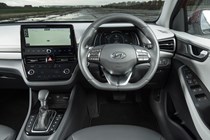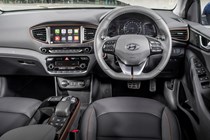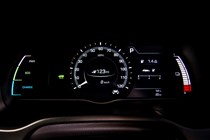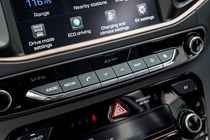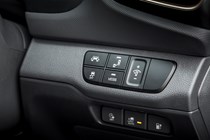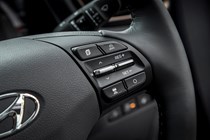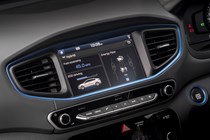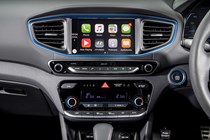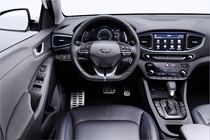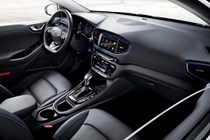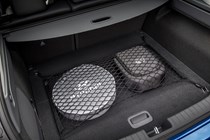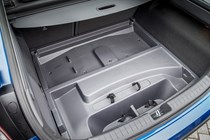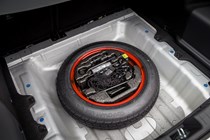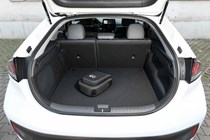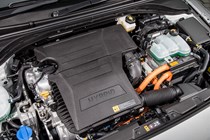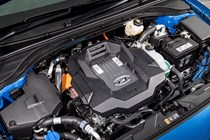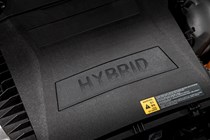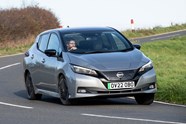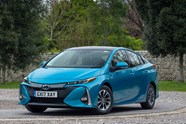
Hyundai Ioniq Hatchback (2016-2022) review
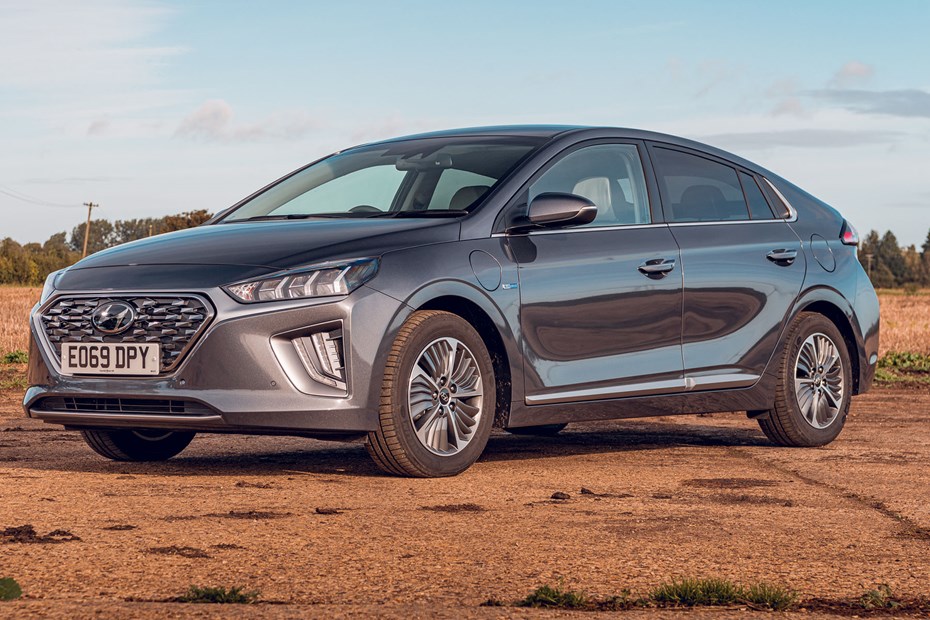
At a glance
| Price new | £21,695 - £32,800 |
|---|---|
| Used prices | £6,513 - £18,141 |
| Road tax cost | £20 - £195 |
| Insurance group | 10 - 13 |
Get an insurance quote with

|
|
| Fuel economy | 61.4 - 62.8 mpg |
| Range | 772 miles |
| Miles per pound | 9.0 - 9.2 |
| Number of doors | 4 - 5 |
| View full specs for a specific version | |
Available fuel types
Hybrid
Pros & cons
- Competitively priced against rivals
- Five-year warranty cover
- Decent dual-clutch auto
- Noisy hybrid drive system
- Some interior plastics are unappealing
- A Prius is more efficient
Hyundai Ioniq Hatchback (16-22) rivals
Overview
While some cars offer choice in the form of personalisation, the Hyundai Ioniq lets you choose between three distinct powertrains. It can be had either as a hybrid, a plug-in or a fully electric model (which we’ve covered in a separate review here). It means you’re able to select one of three advanced, eco-friendly powertrains based on your budget and living situation.
The only other real rival to the Ioniq is the Kia Niro, which offers the same hybrid, plug-in or electric drive systems, but in a compact SUV body. If you’re looking at an Ioniq, then you might also consider family hatchbacks such as the Skoda Octavia (which is available as a plug-in), Toyota Corolla (available as a hybrid), Ford Focus, or the Volkswagen Golf – you might even be considering all-electric cars such as the Nissan Leaf or VW ID.3.
The entry point to the Ioniq hatchback range is the Hybrid. It’s what’s known as a self-charging hybrid, and pairs a 1.6-litre petrol engine to an electric motor and a small battery. While the car is capable of travelling on electric power alone, it will only do so over very short distances – in reality the electric motor helps to take some load off of the engine, and the car’s electronics decide whether the motor or the engine – or a mix of both – is the most efficient use of energy.
The Plug-in Hybrid model is a different matter. Its larger battery can be topped up from a charging point or the mains, and the car has an official range of 39 miles on electric power. This should cover most people’s average daily mileage, so the plug-in model can operate as an electric car through the week and only trouble the petrol engine if a longer journey is required.
The Ioniq is competitively priced against the Toyota Prius, and undercuts the similar Kia Niro. Ordering an Ioniq is simple, too, because Hyundai doesn’t offer vast swathes of options. Instead there are two or three easy-to-understand trim levels, and if you want more kit, you move up to the next version, although even the base grade is well equipped.
Running costs are low thanks to the hybrid powertrain, although the Ioniq Electric is cheaper still. Hyundai also has an excellent reputation for reliability, backed up by an impressive five-year, unlimited-mileage warranty. This is one of the longest in the business, and very reassuring for owners.
Over the next few pages we’ll be thoroughly reviewing all aspects of the Hyundai Ioniq and rating them in our verdict. Our scores will take into account the driving experience, how pleasant the interior is, the practicality on offer and what it’ll cost you to run.



